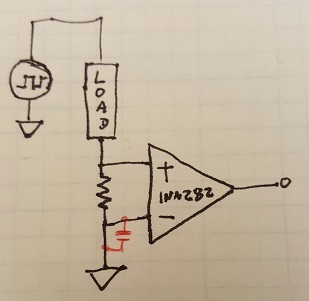Have issue 12.5Khz PWM ground noise at 25mv 45amp full scale shunt (low side monitor) may be amplified by INA282. A much higher pulse is used to trip analog comparator when current rises above preset fault trip threshold.
Will adding a 1nf capacitor to ground load side INA inverting input cause the precision to change or any other internal problem with shunt measures?
Scope capture of INA output signal taken at output resistor divider: Notice single very fast 30-40us FET on pulses rise above the average 1.04ms PWM cycle current period. Scope can only trigger on one pulse at a time even at 10k samples depth but notice these pulses originate all along the average current slope near 200mv.



